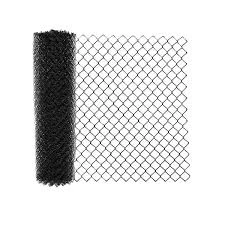The Multifaceted Uses and Symbolism of Razor Wire
Razor wire, often synonymous with security and confinement, is a material that has transcended its original purpose of physical deterrence to become a symbol of social and political issues around the world. Designed to be an effective means of preventing unauthorized access, razor wire consists of sharp-edged wire arranged in coils, making it a formidable barrier against trespassers. While its primary function is to enhance security in various settings, its implications and uses extend far beyond mere protection.
Historically, razor wire evolved from barbed wire, which was invented in the late 19th century, initially to fence off agricultural land. However, as societal needs shifted, particularly in the realms of security and military, razor wire was developed to address the growing concerns over privacy and protection in more volatile environments. Today, it is employed in a plethora of locations, including military installations and correctional facilities, as well as in industrial sites and private properties.
It is crucial to recognize that the deployment of razor wire often reflects underlying societal issues. For instance, in urban environments, the installation of razor wire can symbolize a lack of safety and a response to escalating crime rates. Neighborhoods that feel threatened may resort to more aggressive security measures, embracing razor wire as a temporary solution to transient dangers. Conversely, the presence of razor wire can exacerbate feelings of division and isolation, indicating that security measures can foster a culture of fear rather than community cohesion.
razor wire

Internationally, the use of razor wire often comes under scrutiny as it is associated with immigration control and border security. Many countries have turned to razor wire in efforts to fortify borders against illegal crossings. This application has raised ethical questions and sparked debates about human rights and the treatment of migrants. Images of refugees facing razor wire while seeking safety can invoke powerful emotions and debates around sovereignty vs. compassion, often leading to a narrative that challenges the dichotomy between security and humanity.
Within prisons, razor wire serves a critical function in maintaining safety and security. It acts as an additional layer of deterrent against escape attempts, symbolizing the stark realities of confinement. However, this use also raises moral questions about the prison system and the treatment of inmates. The presence of razor wire can serve as a reminder of societal failings regarding rehabilitation and justice. Critics argue that the focus on punitive measures, represented by such barriers, overshadows the need for reform and constructive solutions in dealing with crime.
Moreover, the aesthetic implications of razor wire cannot be ignored. When used as an architectural element in urban design, it can create a stark contrast against a cityscape, representing both strength and vulnerability. Some artists and architects have employed razor wire symbolically to critique social conditions, transforming a utility meant for restraint into a medium for expression. This duality points to an inherent paradox while razor wire aims to create safe spaces, it can simultaneously signify oppression and exclusion.
In conclusion, razor wire epitomizes a complex interplay of security, societal issues, and artistic expression. Its function as a deterrent belies a deeper narrative that touches on themes of vulnerability, isolation, and community. While it may effectively serve its intended purpose of securing spaces, it also evokes feelings of discomfort and provokes essential conversations about the balance between safety measures and the preservation of human rights. As societies continue to evolve, the dialogue surrounding razor wire must be approached with nuance, recognizing its multiple meanings and implications in an increasingly complex world. Ultimately, understanding razor wire requires us to look beyond its physical presence and consider the broader societal contexts it represents.
















